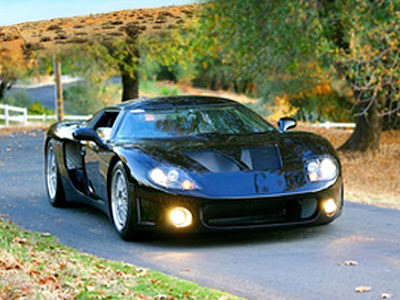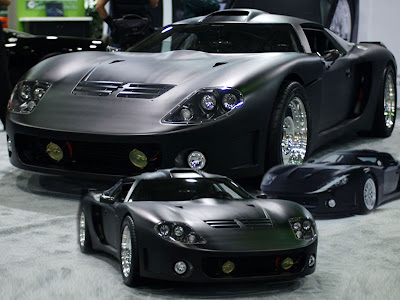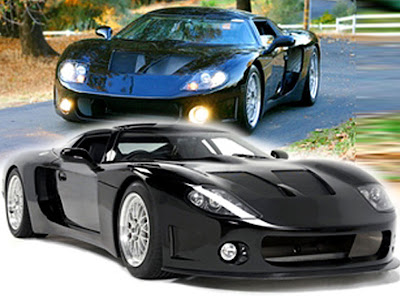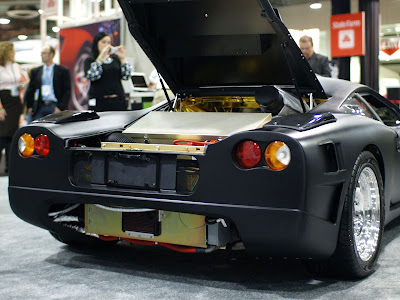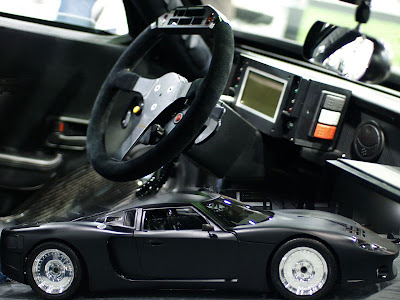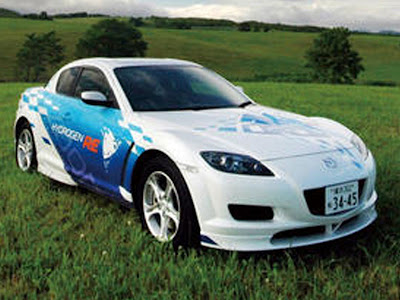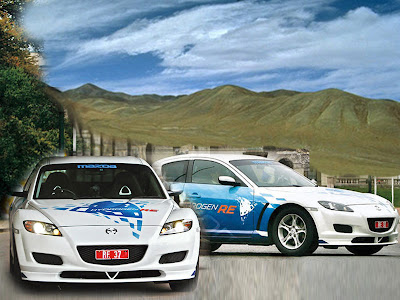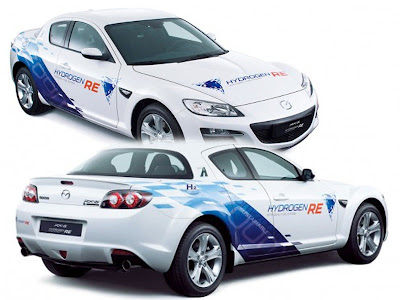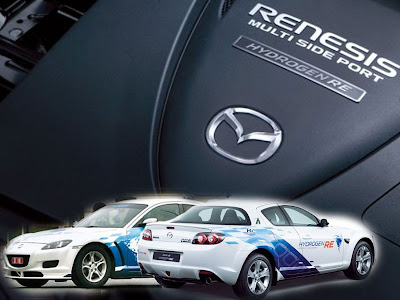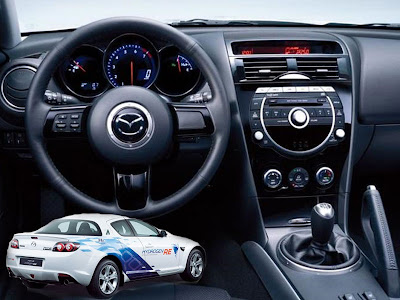Tuesday, June 1, 2010










Labels: 2009, Bugatti, Sports Car
Friday, May 7, 2010
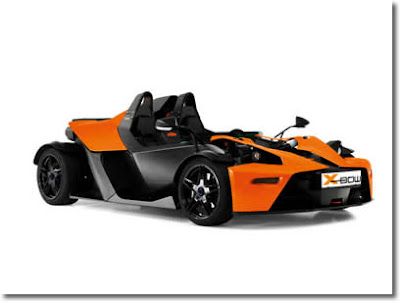
With its aggressive design and immense sporting potential, the X-BOW is a milestone in 50-year history of the KTM brand. At the same time it represents a new benchmark in the small but elite segment of radical lightweight sportscars. This exceptional achievement is the result of its highly original design concept and the fact that for its first car, KTM employed the finest materials, advanced technology and the know-how of respected development partners. The result is a street-homologated sportscar with pedigree motorsport technologies including a cutting edge monocoque made from carbon fibre, identical to those that have become standard in modern Formula 1, for example, because of its weight and safety advantages.
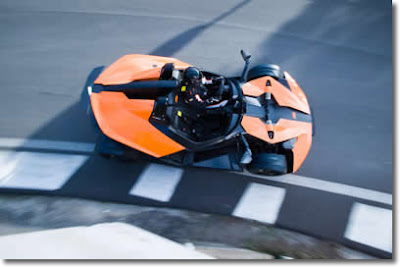
Thanks to the car's light weight and the 177 kW (240 hp) Audi 2.0 TFSI engine, the KTM X-BOW sets new performance standards and outstrips even far more powerful sportscars. Weighing in at around 790 kilograms, it accelerates from a standing start to 100 km/h in only 3.9 seconds. At the same time, low fuel consumption (7.9 litres/100 km) and exhaust emissions (187.23 g/km) rival those of powerful compact cars.

But the X-BOW isn't just a racing machine, even if it does achieve spectacular performance on the race track. With its modern technologies and exceptional dynamics, it's also oriented towards sporty drivers who seek a purist driving experience on the road. By foregoing electronic assistance and extraneous, heavy comfort features, the X-BOW offers an unfiltered driving adventure. This is made possible by the double wishbone suspension front and rear, the exposed mechanical components and the unadulterated concept that leaves the X-BOW without a roof, doors or a windscreen. The sportscar's only concession is a 70 mm high, transparent wind deflector. So driving the KTM X-BOW becomes an experience with an immediacy that otherwise can only be felt when riding a motorbike or driving a single-seater racing car.
For the 2009 model year, there is a new X-BOW product line-up with ownership of the new sportscar phenomenon from KTM starting at only 49,980 Euros (plus national taxes and import duties) for the X-BOW Street that, even with its basic configuration, offers the absolute maximum in driving pleasure.
The Street series features in detail
- Carbon fibre monocoque with crash box, both in clear coat finish
- Audi 2.0 TFSI engine with direct fuel injection and 177 kW (240 hp)
- Smooth racing underbody, front splitter and rear diffuser in aluminium composite
- Individually adjustable pedals and adjustable multi-function steering wheel
- 'Keyless Go' system
- Lacquered alloy wheel rims
- Four-point safety harness
Factory-fitted special options are also available: a removable steering wheel, limited-slip differential or street-homologated semi-slick tyres and of course a wide selection of KTM PowerParts.
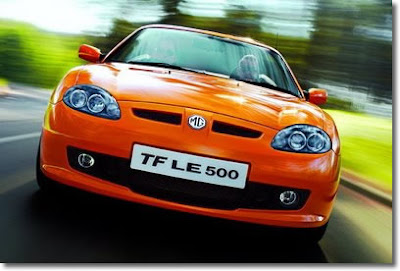 With deliveries of the new MG TF Limited Edition due to commence in September, NAC MG UK Ltd have today, 2nd July 2008, set the price of this new sportscar at £16,399 on the road.
With deliveries of the new MG TF Limited Edition due to commence in September, NAC MG UK Ltd have today, 2nd July 2008, set the price of this new sportscar at £16,399 on the road.
Sales and Marketing Director for NAC MG UK Ltd, Gary Hagen, said; "We are delighted to be able to bring in such a highly specified car at such a reasonable price. When you consider the level of specification that comes with the LE500, the package is extremely competitive."
A new look, upgraded engine and a host of design refinements and extras have brought the MG bang up to date. A body coloured hardtop, sports styled leather seats and a piano black interior give the car a stylish new look.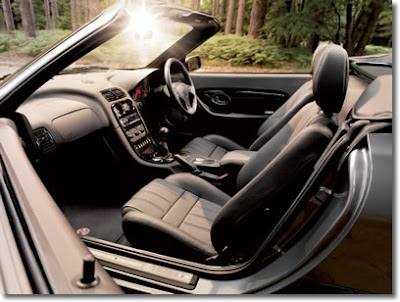 The mid car configuration for the 1.8 16v EU4 compliant 136ps engine combines with rear wheel drive to ensure the LE500 delivers an authentic British sportscar driving experience. Parking sensors, a Pioneer MP3 compatible CD / radio unit and last but not least unique LE500 badging, graphics & trim complete the package. Full details of the specification are available at www.mg-uk.co.uk.
The mid car configuration for the 1.8 16v EU4 compliant 136ps engine combines with rear wheel drive to ensure the LE500 delivers an authentic British sportscar driving experience. Parking sensors, a Pioneer MP3 compatible CD / radio unit and last but not least unique LE500 badging, graphics & trim complete the package. Full details of the specification are available at www.mg-uk.co.uk.
Gary concluded; "The backing of SAIC, China's largest car maker, and the fact the LE 500 has been designed, engineered and is being built in the UK, will play a major role in the car's success.
"When it was last available, the MG was the UK's best selling small sports car. We are confident that the indicated demand for the return of the marque from dealers, enthusiasts and most importantly new customers will see it reclaim that position".
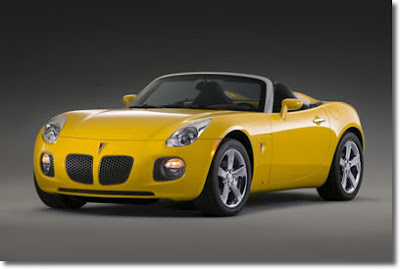
The Solstice GXP comes with a turbocharged, Ecotec 2.0-liter 4-cylinder engine rated at 260 horsepower that can be mated to either a close-ratio 5-speed manual transmission or a 5-speed automatic. Riding on a standard performance suspension using Bilstein adjustable-valve, monotube shock absorbers, the GXP features 18" polished aluminum wheels with 18" chromed wheels as an option.
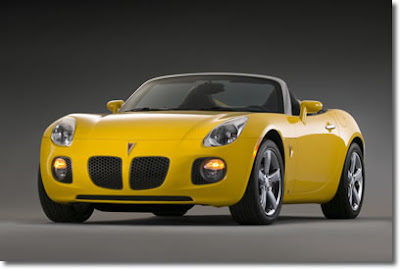
The Solstice GXP offers a wide variety of standard and optional safety equipment. GM's Onstar Services, which includes AccidentAssist, crash notification, fuel station location, hands-free calling, concierge services, turn-by-turn navigation and vehicle diagnostics, is available. In addition to Onstar, the Solstice GXP includes standard front air bags and antilock disc brakes at all four corners. GM's StabiliTrak Dynamic Control System is also standard on the Solstice GXP.
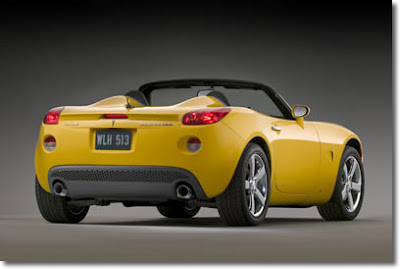
For 2008, the Solstice GXP offers two optional packages: a personal audio link that integrates an Apple iPod and a premium package that includes leather seats, 3-spoke leather-wrapped steering wheel and steering wheel accessory controls.
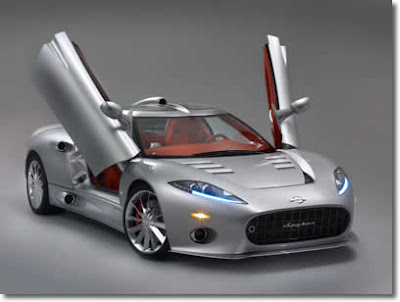
Spyker Cars, manufacturer of exclusive premium sports cars since 2000, today proudly introduces the production version of its all-new second-generation sports car: the Spyker C8 Aileron, the prototype of which was shown at Geneva in 2008.
Victor R. Muller, Spyker Cars’ founder and Chief Executive Officer said on the occasion of the unveiling: “When we unveiled the C8 Aileron prototype here last year, we wanted to make a clear statement to the industry that Spyker was about to take the next step in its short but intense history, by introducing its second-generation sports cars, developed from scratch. Within a year we transformed that prototype into the production-ready car we show here today. The first cars are being built now with customer production and deliveries starting in May 2009.
The C8 Aileron’s design is heavily inspired by Spyker’s aviation heritage, as was the case with all previous models, but with a clear emphasis on the second-generation aircraft propulsion: the turbine rather than the propeller that adorned so many elements of the first-generation cars. Similarly the “Aileron” name pays tribute to that aviation heritage.
It is the device that makes an aircraft turn and symbolizes the turning point that the Aileron is for Spyker: the car which will turn the company towards long-awaited profitability.”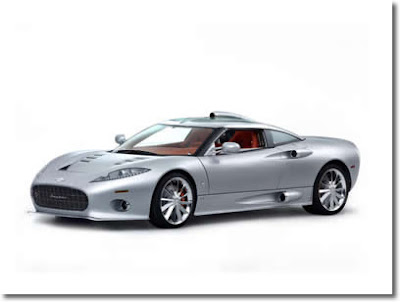
All-Aluminium Space frame Chassis
The Spyker C8 Aileron’s all-aluminium space frame was completely redesigned from scratch with the objective to increase torsional rigidity and to incorporate an all-new suspension system. These characteristics provide an ideal foundation for enhanced vehicle dynamics.
Moreover, the C8 Aileron’s dimensions have been optimised for more interior space and to accommodate the optional automatic gearbox. Compared to the short wheelbase of the firstgeneration cars - the Spyker C8 Laviolette and C8 Spyder - the wheelbase of the C8 Aileron is 150 mm longer, also providing for more driving comfort and stability at high speeds. Its front track has increased by 155 mm. The total dimensions of the front and rear track are now 1625 mm and 1645 mm respectively, which improves road handling significantly.
Spyker has put tremendous efforts in the space frame performance of the C8 Aileron, specifically the structure’s efficiency. The utilisation of modern finite element and numerical optimization methods has allowed Spyker’s engineers to arrive at an exceptionally stiff structure of 22.000Nm/degree. Rigidnode and load-path technology has been employed in order to ensure that the minimum amount of aluminium is used to achieve this performance, thus reducing the overall weight of the vehicle. The dynamic stiffness characteristics of the structure have been carefully tuned in order to minimize unwanted cabin noises and vibrations, which may otherwise detract from the driving experience. These technologies and measures have allowed Spyker to arrive at the most efficient chassis in its history.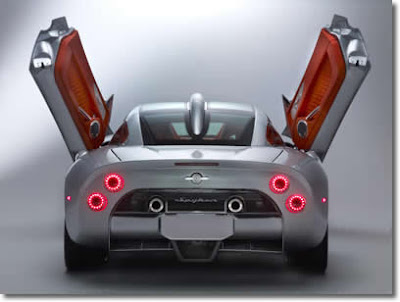
Design
The design of the hand-crafted Spyker C8 Aileron represents the latest evolution of Spyker’s signature architecture, which is prominently inspired by the company’s aviation heritage. In the first-generation cars, the propeller design was consistently applied to many elements of the cars. Within the design of the new Spyker C8 Aileron, the emphasis was shifted from the propeller propulsion to the turbine propulsion. As a result, for instance, the bright polished air inlets were converted into turbine-engineshaped air scoops.
In order to enhance the aerodynamic performance of the car, several changes in styling were made, such as stretching the canopy backwards. Most of the shark-like gills have been abandoned, which results in a cleaner, smoother appearance. The front end is now characterised by a larger grille that gives additional cooling. Also the rear diffuser was redesigned for improved functionality. An extra spoiler has been placed under the diffuser, providing additional downforce to boost the ground effect produced by the diffuser.
Sometimes practicality gains over design: the split side windows with the characteristic metal frame have been replaced by single-pane side windows that are fully retractable, improving driving comfort. The outside mirrors, standard in body colour, were redesigned and the mirror body is mounted on two turbine fan blades.
The rear lights are made of LEDs (light-emitting diodes). LED lights were also used for the indicators and the in the redesigned headlight units. The style of the headlights is particularly eyecatching as they follow the body design more closely. This characteristic styling can be defined as a part of the (future) Spyker identity first seen on the Spyker C12 Laturbie and subsequently in the Spyker D8 Peking-to-Paris. In fact, the latter will use the identical headlight units to those of the Aileron.
The C8 Aileron is available in 16 standard colours, but customers may choose any colour they wish as an option, as well as the Spyker Squadron GT2 colour scheme. The standard colours have been developed by Sikkens Autolakken Nederland and AkzoNobel Car Refinishes. Spyker selected these companies because of their high quality standards and their flexibility to meet with special requirements. Some of the standard colours have been created especially for the C8 Aileron.
Power train
The Spyker C8 Aileron will use the Audi 4.2 litre V8 engine, giving 400 bhp and will be available with two transmission alternatives. The first one is a 6-speed Getrag manual gearbox, with ratios perfectly matched to the V8 engine. This is joined by a ZF 6-speed automatic gearbox, which comes standard with paddle shifts behind the steering wheel, to progress smoothly through the ratios. Both transmissions retain Spyker’s trademark exposed gear change mechanism.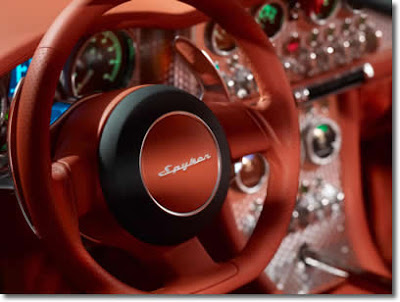
Interior
Thanks to the longer chassis, the Spyker C8 Aileron has more interior space, which results in a higher comfort level and improved ergonomics. The interior, with its typical attention to detail, is made of the highest quality leather, from the Litano range of the Dutch Royal Tannery Hulshof. The leather interior is available in 14 standard colours, but any other colour – if desired by the customer – can be ordered as an option.
Driver and passenger sit low, close to the car’s centre of gravity, where they can feel the car reacting to the input of the driver, for a direct and sporting connection between car and driver.
The dashboard was completely redesigned to suit the new Spyker identity and to improve ergonomics and functionality. Air vents are designed in turbine style and the performance and distribution of the air conditioning was improved significantly. A multifunctional LCD display is integrated between the speedometer and the odometer. The middle console accommodates the standard Kharma sound system (see In-Car Entertainment). Chronoswiss dials and switches are available as an option. More space was created around the Spyker characteristic floor-mounted pedal box. The impression of professional functionality and ergonomic styling is enhanced by the optimised positioning of the door handle and the hand-brake lever.
In-Car Entertainment
With larger numbers of cars going into the market and the increased popularity of the iPod and similar products, the demand for a standard sound system fitted by the factory increased. As a result, every Spyker C8 Aileron will be equipped as standard with a Kharma sound system, incorporating a digital radio, Bluetooth interface, an iPod connectivity and a navigation system. The Kharma sound system offers joystick controls on the central console and a dashboard display, paired to 6 Kharma loudspeakers. It can be extended with two optional audio packages.
The presence of a Kharma sound system in the Spyker C8 Aileron marks Kharma’s debut in the world of automotive entertainment. Kharma International produces high-end audio products and sells worldwide through a network of highly qualified distributors and dealers. All sound systems are developed, assembled and tested in the Netherlands, with the utmost care by a team of highly engaged specialists. These characteristics of high-quality products and exclusiveness are in line with Spyker’s brand values craftsmanship and exclusivity.
Suspension & Wheels
The C8 Aileron is fitted with a brand-new front and rear independent double-wishbone suspension system. The new suspension system includes a new kinematic layout of the front and rear suspension, front and rear stabilizer bars, mono-tube dampers, coil over damper steel springs, anti-dive and antisquat setup for improved handling properties. The suspension components are made of forged aluminium where possible, to keep the vehicle’s unsprung weight as low as possible. Shock absorbers are now placed vertically within the wishbones.
The Aeroblade™ wheels of the first-generation cars are replaced by newly-designed 19-inch alloy wheels. New 10-blade, 19-inch directional rotor wheels, branded Rotorblade™, are available as an option. These wheels are inspired by the turbine blades of a jet engine, which hints the new styling direction while respecting the aviation heritage. The 235/35 size tyres at the front and up to 295/30 at the rear provide the necessary road holding.
Brakes
Brakes are supplied by AP Racing, a partner from day one. Black brake calipers with Spyker script are standard. Colour-coded calipers with Spyker script can be ordered as an option. Carbon ceramic brakes will be available as an option soon.
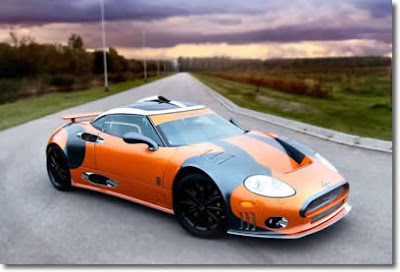
Spyker Cars N.V., manufacturer of exclusive premium sports cars, proudly presents the Spyker C8 Laviolette LM85 - the road version of its GT2 LeMans car. The Spyker C8 Laviolette LM85 will be built as a limited edition of 24 units maximum, and will be available in both left and right hand drive. Production of the LM85 commences this quarter.
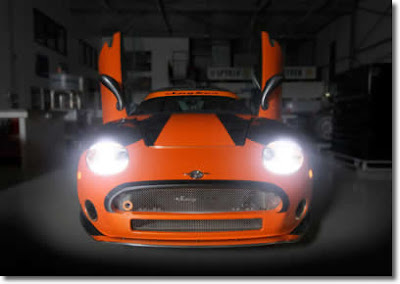 The LM85 is an advanced mid-engine, two-seat sports car. It is characterized by a lightweight all aluminum body construction and an uncompromising engineering package. The powertrain of the LM85 is the all aluminum Audi 4.2 liter V8 engine producing 400 bhp. This is paired to a manual six-speed Getrag gearbox, driving the rear wheels with a Drexler limited slip differential. ABS is standard. The use of aluminum parts and other lightweight materials results in an impressive power-to-weight ratio and underlines the GT2 racing heritage of the car.
The LM85 is an advanced mid-engine, two-seat sports car. It is characterized by a lightweight all aluminum body construction and an uncompromising engineering package. The powertrain of the LM85 is the all aluminum Audi 4.2 liter V8 engine producing 400 bhp. This is paired to a manual six-speed Getrag gearbox, driving the rear wheels with a Drexler limited slip differential. ABS is standard. The use of aluminum parts and other lightweight materials results in an impressive power-to-weight ratio and underlines the GT2 racing heritage of the car.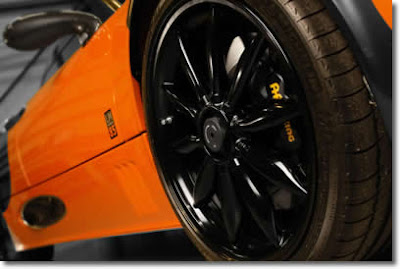 Exterior
ExteriorBased on the Spyker C8 Laviolette GT2R, the racing characteristics of the LM85 are numerous, such as the all aluminum chassis, GT2 livery (Burnt Almond Orange with Gun Metal 'S' logo), side mirrors in body color, a carbon fiber rear spoiler, and GT2 windscreen streamer. Behind the black powder coated alloy wheels, black AP Racing 6 piston brake calipers with AP Racing logo appear. The LM85 can optionally be equipped with Le Mans sticker sets as well as a customised LM85 car cover.
Interior
The ample use of black leather and alcantara, which is originally meant to reduce light reflection during racing, has been finished with orange contrast stitching and characterizes the unique interior of the LM85. The dashboard instrument panel is made of turned aluminum. Each car will feature a personalised LM85 serial plaque. On request, Chronoswiss dials and switches can be installed and are virtually identical to the Chronoswiss 24Hours Pilot Watch every LM85 owner receives with his car. The black floor mats are made of fire protective material, finished with orange piping and the LM85 logo embroidered.
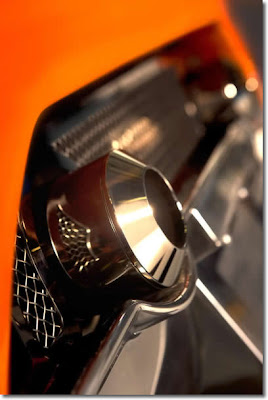
Extra features
As mentioned above, every LM85 owner receives a special edition Spyker Chronoswiss 24H Pilot Watch with orange crocodile strap. The serial number of the car will be engraved on the case of this exquisite time piece. Additionally, all LM85 owners are offered an exclusive Spyker VIP Hospitality weekend at the 24H of Le Mans in 2009.
Labels: 2009, C8, Laviolette, LM85, Spyker
Monday, April 26, 2010








Labels: 2009, Audi, Sports Car
Friday, January 8, 2010
Capstone Supercar CMT-380 the high performance hybrid electric microturbine vehicle Debut at LA Auto Show
0 comments Posted by org at 10:32 AMThe CMT-380 features lithium-polymer battery cells that can be charged at home or at a public recharging station. While driving, the CMT-380 can operate on 100 percent battery power in zero emissions mode for a range of up to 80 miles. When the batteries reach a predetermined state of discharge, the Capstone C30 microturbine quietly fires up and recharges the batteries on the fly to extend the driving range up to 500 miles. The diesel fueled C30 microturbine requires less maintenance than traditional combustion engines and produces ultra-low exhaust emissions. Hilleman has owned an electric vehicle – a converted Porsche 550 Spyder – for at 15 years and has constantly upgraded it. The EV used to have just 30 hp with lead acids but now uses lithium ferrous batteries and has 200 hp. The 100-mile range hasn't changed, though, and so he knew it was time to build a hybrid. He decided on Capstone's diesel microturbines as the range extender.
He knew he could rely on them – they've been used in buses for years – but there was still the challenge of fitting the unit into a car like this. Hilleman built the CMT-380 just for himself, but Capstone is happy to show it off as a proof of concept vehicle. It would be too pricey to put into mass production (Hilleman estimated he put in about $375,000 hours of work), but it's not impossible that a high-end, expensive, limited production run could be made some day.
Right now, Hilleman is really happy with his creation. He especially loves the sound of the vehicle. Three feet to the side of the car, the microturbine puts out about 87 dB, but in the cabin, it's nearly silent. California law might require him to add a muffler, but it's already quiet enough without one. He's got a solution for that problem, should he need it.
The chassis and bodywork of the Capstone CMT-380 are borrowed from the Factory Five GTM kit sports car, and modified to accept the hybrid drivetrain.
"Capstone's CMT-380 is just now finishing up the conceptual design and first article testing stage," said Darren Jamison, Capstone President and CEO. "We plan to finalize very soon a limited production plan, in part, based on interest received at the [2009] LA Auto Show. We anticipate customers will be a select group of individuals who appreciate its many innovative high-performance and high-technology driving characteristics, long driving range and ultra-low emissions," added Jamison.
Labels: 2009, Capstone CMT, Concept Car, Sports Car, Supercars
Saturday, January 2, 2010
2009 Mazda Sports Car RX-8 Hydrogen RE vehicle with Norwegian specifications in HyNor
0 comments Posted by org at 5:15 PM2009 Japan Mazda Motor Corporation (HIROSHIMA) announced that it has built the first Mazda RX-8 Hydrogen RE vehicle with Norwegian specifications, developed specifically for participation in HyNor, Norway’s national hydrogen project. The first unit will take part in ceremonies marking the official opening of HyNor’s hydrogen filling stations.
Unlike the RX-8 Hydrogen RE currently being leased in Japan, the HyNor-specification Mazda RX-8 Hydrogen RE is based on the latest European-specification Mazda RX-8 with left-hand drive and a manual transmission.
The HyNor project aims to enable hydrogen vehicles to travel along a 580-kilometer stretch of highway by establishing a chain of hydrogen stations between Stavanger and Oslo in Norway.
Mazda agreed to collaborate with HyNor on the project in November 2007 and began validation of the RX-8 Hydrogen RE’s driving performance on Norwegian public roads in October 2008.
Labels: 2009, Mazda, Sports Car
Tuesday, December 29, 2009
2009 Veyron Centenary Bugatti Sports Car a Special Editon Dubai Limited to five cars only
0 comments Posted by org at 6:31 PM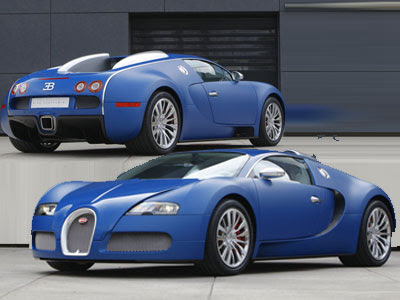
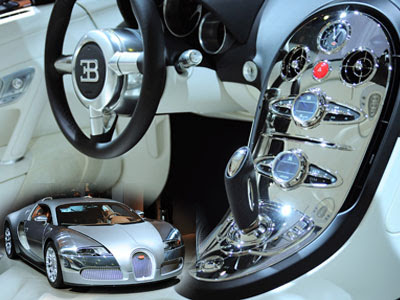 2009 Veyron Centenary Bugatti Sports Car
2009 Veyron Centenary Bugatti Sports Car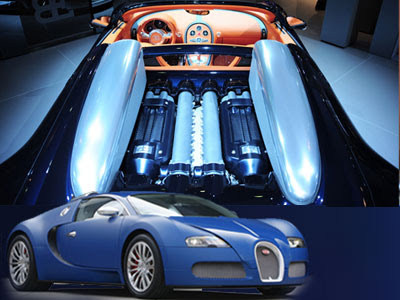 2009 Veyron Centenary Bugatti Sports Car
2009 Veyron Centenary Bugatti Sports Car 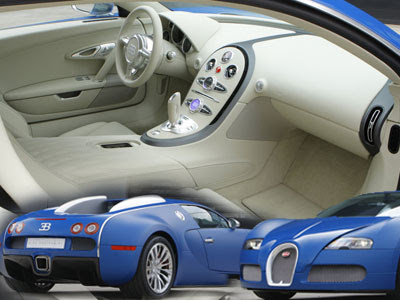 2009 Veyron Centenary Bugatti Sports Car
2009 Veyron Centenary Bugatti Sports Car Labels: 2009, Bugatti, Sport Car, Sport coupe



